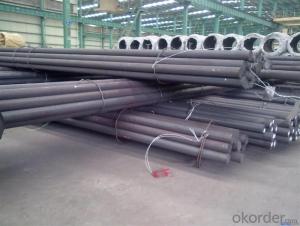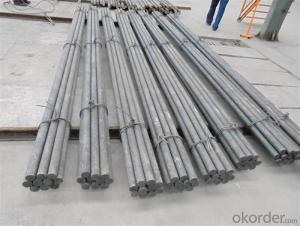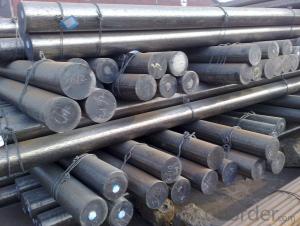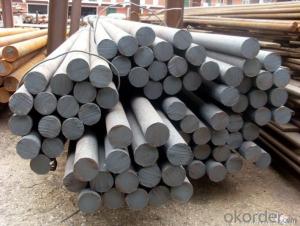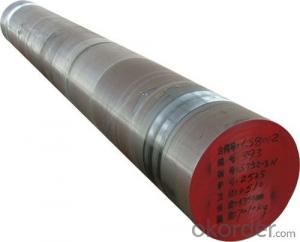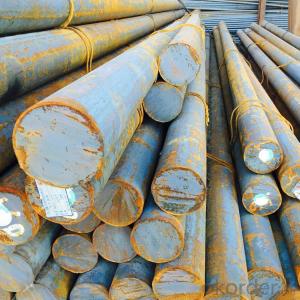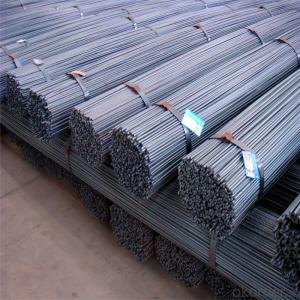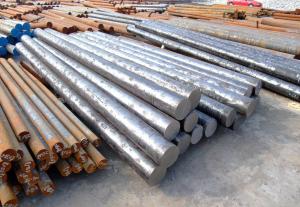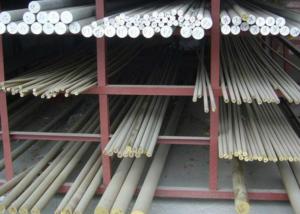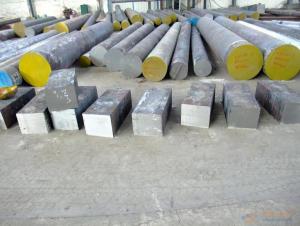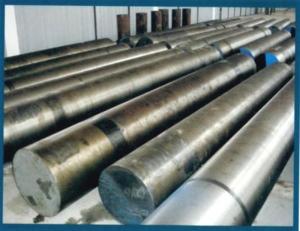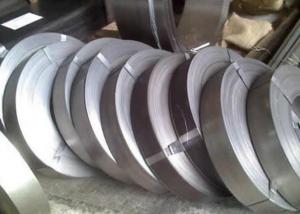AISI 4130, 4130 Steel, 4130 Steel Price
- Loading Port:
- Tianjin
- Payment Terms:
- TT OR LC
- Min Order Qty:
- 25 m.t.
- Supply Capability:
- 50000 m.t./month
OKorder Service Pledge
OKorder Financial Service
You Might Also Like
Item specifice
AISI 4130, 4130 Steel, 4130 Steel Price
Product Description:
Name | Aisi 4130, 4130 steel, 4130 steel price | |||
Features | 1, Chromium molybdenum alloy steel | |||
2, Supplied in the hardend and tempered condition | ||||
3, Lower carbon content, provide better weldability | ||||
4, Readily machineable in the condition of 18-22 HRC | ||||
Applications | 1, Widely used for oil and gas sector | |||
2, Components such as valve bodies, pumps and fittings | ||||
Sizes | Round bar | Diameter(mm) | Length(mm) | |
Max 800 | Max 9000 | |||
Plate | Thickness(mm) | Width(mm) | Length(mm) | |
Max 800 | Max 2200 | Max 9000 | ||
The above is our regular size, We also can provide customized sizes! | ||||
Packing | 20ft: GW 27T; (5.80mX2.13mX2.18m)
40ft: GW 27T; (11.8mX2.13mX2.18m) | |||
Price | The price will change according to the weight of the steel you need. | |||
Chemical analysis
C | Si | Mn | P≤ | S≤ | Cr | Ni≤ | Mo |
0.28~0.33 | 0.15~0.35 | 0. 40~0.60 | 0.040 | 0.040 | 0.80~1.10 | 0.030 | 0.15~0.25 |
Application:
AISI 4130 is a chromium molybdenum alloy steel specification. It is supplied as round bar commonly in the hardened and tempered condition with a hardness of 18-22 HRc. With a lower carbon content range AISI 4130 provides better weldability, at the expense of through thickness strength, than that of other oil and gas steel grades such as AISI 4140. AISI 4130 alloy steel is readily machineable in the supply condition of 18-22 HRc.
Specification:
Round bar | Diameter(mm) | Length (mm) | |
10~1500 | 2000~5800 | ||
plate/sheet | Thickness(mm) | Width (mm) | Length (mm) |
10~1500 | 80~2300 | 2000~5800 |
Round bar /plate can be supplied as full bar lengths or cut pieces. AISI 4130 ground steel bar can be supplied, providing a quality alloy steel precision ground bar to tight tolerances.
Product Show:

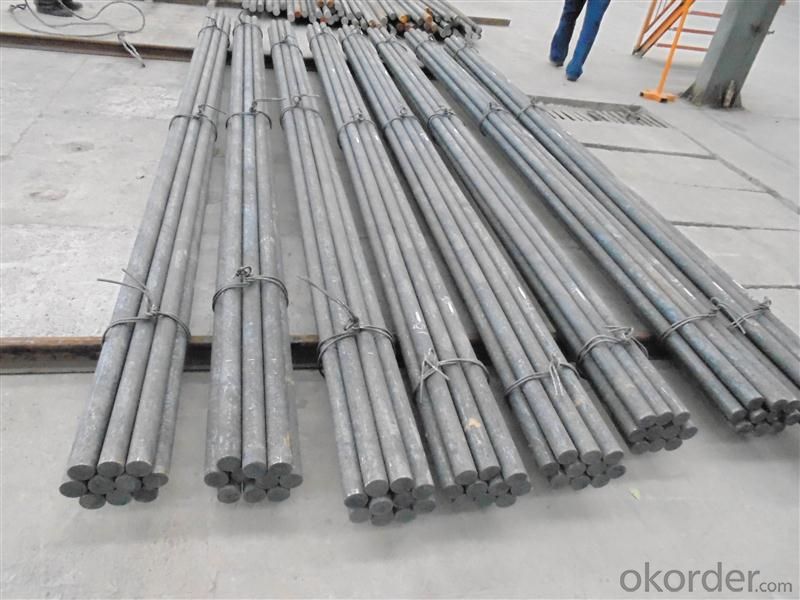
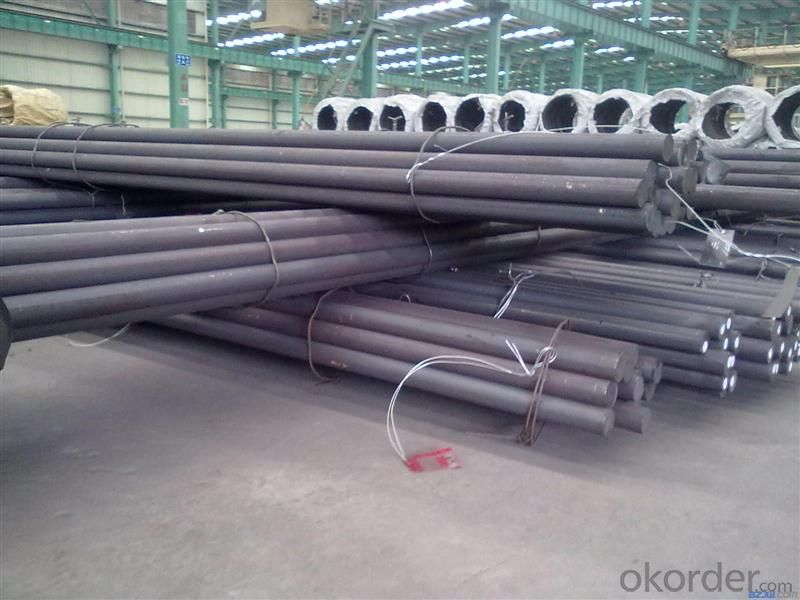
- Q:Does special steel have any magnetic properties?
- Depending on its composition and treatment, special steel can indeed possess magnetic properties. The primary constituent of steel is iron, which is inherently ferromagnetic and capable of being magnetized. However, the magnetic characteristics of steel can be influenced by the presence of other elements such as nickel, cobalt, and various alloys. For example, stainless steel, which contains chromium and nickel, is typically either non-magnetic or only weakly magnetic. Conversely, materials like tool steel or high-speed steel may exhibit more pronounced magnetic properties due to their specific composition and heat treatment. Consequently, it is crucial to take into account the precise type of special steel and its alloying elements when assessing its magnetic behavior.
- Q:How are aluminum alloys used in the automotive industry?
- Aluminum alloys are widely used in the automotive industry due to their lightweight yet durable properties. They are used in the construction of car bodies, engine components, wheels, suspension systems, and other critical parts. By using aluminum alloys, vehicles can achieve better fuel efficiency, improved performance, and reduced emissions. Additionally, these alloys offer better corrosion resistance, which enhances the lifespan and overall quality of automobiles.
- Q:What are the different methods of surface lapping for special steel?
- There are several different methods of surface lapping for special steel. These methods are used to achieve a high level of flatness and smoothness on the surface of the steel. One common method is called free abrasive lapping. In this method, a slurry containing abrasive particles is used to polish the surface of the steel. The slurry is typically applied to a rotating lap plate, which is then pressed against the steel surface. The abrasive particles remove material from the surface, resulting in a smoother and flatter surface. Another method is called fixed abrasive lapping. In this method, a rigid lap plate with abrasive particles embedded in it is used to polish the steel surface. The lap plate is typically made of a harder material than the steel being lapped. As the lap plate rotates and is pressed against the steel surface, the embedded abrasive particles remove material, resulting in a smoother surface. Chemical lapping is another method that can be used for special steel. In this method, a chemical solution is applied to the steel surface. The chemical solution reacts with the surface of the steel, dissolving and removing a thin layer of material. This method is often used when a high level of flatness is required. Ultrasonic lapping is a method that uses ultrasonic vibrations to enhance the lapping process. In this method, the steel surface is placed in contact with a bath of abrasive particles and a liquid medium. Ultrasonic vibrations are then applied to the liquid medium, causing the abrasive particles to vibrate and remove material from the surface of the steel. This method can be particularly effective for lapping hard and brittle materials. Overall, the different methods of surface lapping for special steel offer various approaches to achieve the desired level of flatness and smoothness. The selection of the method depends on factors such as the type of steel, the desired surface finish, and the specific requirements of the application.
- Q:What is the process of manufacturing special steel?
- The process of manufacturing special steel involves several steps. Firstly, raw materials such as iron ore, coal, and limestone are gathered and processed to create molten iron in a blast furnace. Next, impurities like carbon, sulfur, and phosphorus are removed through various refining techniques. Once the desired composition is achieved, the molten iron is transferred to a steelmaking furnace, where alloying elements like chromium, nickel, or manganese are added to impart specific properties. The mixture is then refined further to remove any remaining impurities and to adjust the temperature and composition. After refining, the molten steel is cast into various shapes such as blooms, billets, or slabs, depending on the desired end product. These primary forms are then subjected to hot rolling, forging, or extrusion processes to shape them into the desired final products, such as bars, plates, or wires. Finally, the manufactured steel undergoes heat treatment processes like annealing, quenching, or tempering to enhance its strength, hardness, and other mechanical properties. It is also subjected to quality control measures to ensure it meets the required specifications. Overall, the process of manufacturing special steel involves a combination of raw material preparation, refining, casting, shaping, heat treating, and quality control steps to produce steel with specific properties tailored to meet diverse industrial needs.
- Q:How does special steel contribute to the robotics industry?
- The robotics industry benefits greatly from the use of special steel, which plays a vital role in its advancement. To begin with, special steel alloys possess extraordinary mechanical properties that make them ideal for manufacturing various robotic components. These alloys provide exceptional strength, durability, and resistance to wear and tear. Consequently, robots built with special steel can operate efficiently and reliably even in demanding environments like manufacturing plants or hazardous locations. Furthermore, special steel alloys offer outstanding heat resistance and thermal stability, a crucial characteristic in robotics. As robots often generate significant heat during operations, special steel components can withstand high temperatures without deforming or losing their structural integrity. This capability ensures that robots can perform optimally without the risk of mechanical failures caused by heat-related issues. Additionally, the corrosion resistance of special steel is highly advantageous for the robotics industry. Robots are increasingly being used in diverse applications such as underwater exploration, chemical handling, and outdoor environments. In such cases, exposure to moisture, chemicals, or harsh weather conditions can lead to corrosion and degradation of robot parts. By utilizing special steel alloys, manufacturers can significantly prolong the lifespan of robotic systems, reducing maintenance costs and enhancing overall reliability. Moreover, special steel's magnetic properties are invaluable in the development of magnetic sensors and actuators used in robotics. These sensors enable robots to detect and interact with their surroundings, improving their autonomy and adaptability. On the other hand, magnetic actuators enable precise control and movement in robotic systems. Special steel's magnetic properties contribute to the efficiency, accuracy, and responsiveness of these components, allowing robots to execute complex tasks with precision. In conclusion, special steel plays a vital role in the robotics industry by providing the necessary materials for manufacturing robust, high-performance, and versatile robotic systems. The use of special steel alloys enhances strength, durability, and the ability to withstand extreme conditions, ensuring the reliability, efficiency, and functionality of these machines.
- Q:What are the specific requirements for special steel used in the mining industry?
- To ensure the durability, strength, and resistance to harsh conditions of special steel used in the mining industry, certain requirements must be met. Key requirements for this type of steel include: 1. High tensile strength is necessary to withstand heavy loads and resist deformation under extreme conditions. This enables the steel to endure the pressure, impact, and stress encountered during mining operations. 2. Excellent wear resistance is essential to prevent premature failure and increase the lifespan of mining equipment in abrasive environments. Rocks and ores can cause significant wear on the equipment. 3. High corrosion resistance is crucial in highly corrosive mining environments, such as underground mines or areas near water bodies. The steel should be able to withstand exposure to chemicals, moisture, and other corrosive agents to prevent rusting, pitting, and other forms of corrosion that weaken the steel. 4. Excellent toughness is required to withstand heavy impacts and vibrations that mining equipment is subjected to. If the steel is not tough enough, fractures can occur. The steel must be able to absorb energy from impacts and vibrations without fracturing, ensuring the safety and reliability of the equipment. 5. Good heat resistance is necessary to withstand high-temperature mining operations, such as smelting and refining processes. The steel should not lose its strength or undergo deformation under elevated temperatures. 6. Good machinability is important to allow for easy formation of complex shapes or structures. This facilitates the manufacturing process of mining equipment and components. Overall, meeting these requirements is crucial for ensuring the reliability, durability, and safety of mining equipment in demanding mining environments.
- Q:How does special steel contribute to the power generation sector?
- The power generation sector greatly relies on special steel due to the numerous benefits it offers and its contribution to the overall efficiency and reliability of power generation equipment. Special steel plays a vital role in this sector by providing superior strength and durability, which is essential given the demanding and extreme conditions involved in power generation, such as high temperatures, pressure, and corrosive environments. By being specifically designed to withstand these harsh conditions and maintain its structural integrity, special steel ensures the long-term reliability and safety of power generation equipment. Various components of power generation equipment, including turbines, boilers, and generators, benefit from the use of special steel. For instance, gas turbines utilize special steel for the construction of turbine blades and vanes, which endure immense heat and rotational forces. Special steel's high-temperature resistance and strength enable these components to operate efficiently at elevated temperatures without deformations or failures, thus enhancing the performance of gas turbines. Furthermore, special steel exhibits excellent corrosion resistance, making it suitable for power plants that employ water-based cooling systems. These cooling systems often use seawater or chemically treated water, which can be highly corrosive. By incorporating special steel in critical components like condensers and heat exchangers, the power generation sector significantly reduces maintenance and replacement costs associated with corrosion-related issues. Moreover, special steel plays a crucial role in the construction of nuclear power plants. It is utilized in the fabrication of reactor pressure vessels, steam generators, and fuel assemblies. The radiation resistance and high strength of special steel ensure the safety and reliability of these components in nuclear power plants, thereby contributing to the overall efficiency and sustainability of the power generation sector. In conclusion, special steel's exceptional strength, high-temperature resistance, corrosion resistance, and radiation resistance make it an indispensable material in the power generation sector. Its usage enhances the efficiency, reliability, and safety of power generation equipment, ultimately contributing to the growth and sustainability of the power generation industry as a whole.
- Q:What are the different forms of special steel?
- There are several different forms of special steel, including stainless steel, tool steel, high-speed steel, alloy steel, and spring steel. Each form has unique properties and is designed for specific applications in various industries.
- Q:What are the main advantages of using special steel in the construction industry?
- The main advantages of using special steel in the construction industry are its exceptional strength, durability, and versatility. Special steel has a high tensile strength, allowing for the construction of structures that can withstand heavy loads and extreme conditions. Its durability ensures a longer lifespan for buildings, reducing maintenance costs. Additionally, special steel can be manufactured in various forms and shapes, making it highly versatile and adaptable to different construction requirements.
- Q:How is high-temperature steel used in power generation equipment?
- High-temperature steel is used in power generation equipment due to its excellent strength and heat resistance properties. It is specifically utilized in the construction of boilers, turbines, and heat exchangers, where it can withstand extreme temperatures and pressures. This steel ensures the efficient and safe operation of power plants by allowing them to generate electricity through the combustion of fossil fuels or nuclear reactions while enduring high operating temperatures without structural failure.
1. Manufacturer Overview |
|
|---|---|
| Location | |
| Year Established | |
| Annual Output Value | |
| Main Markets | |
| Company Certifications | |
2. Manufacturer Certificates |
|
|---|---|
| a) Certification Name | |
| Range | |
| Reference | |
| Validity Period | |
3. Manufacturer Capability |
|
|---|---|
| a)Trade Capacity | |
| Nearest Port | |
| Export Percentage | |
| No.of Employees in Trade Department | |
| Language Spoken: | |
| b)Factory Information | |
| Factory Size: | |
| No. of Production Lines | |
| Contract Manufacturing | |
| Product Price Range | |
Send your message to us
AISI 4130, 4130 Steel, 4130 Steel Price
- Loading Port:
- Tianjin
- Payment Terms:
- TT OR LC
- Min Order Qty:
- 25 m.t.
- Supply Capability:
- 50000 m.t./month
OKorder Service Pledge
OKorder Financial Service
Similar products
New products
Hot products
Hot Searches
Related keywords
